Sustainable success with interior display print applications
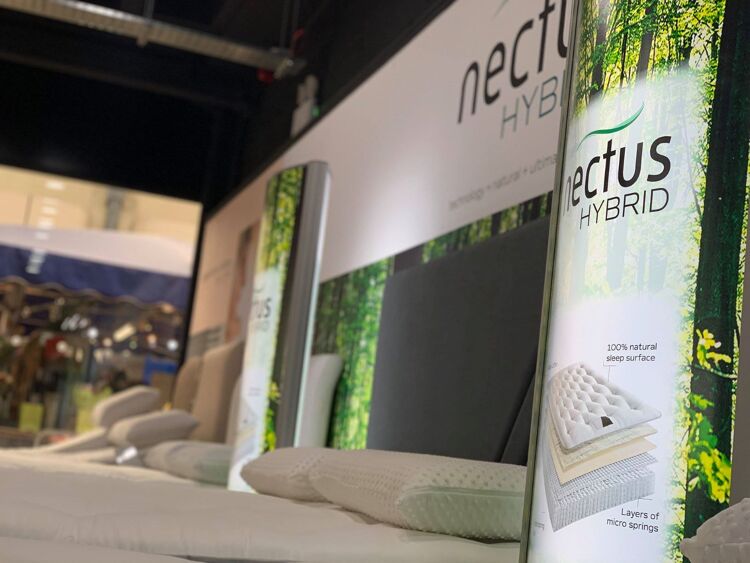
While the interior print market has been a growth area for several years, those in this sector are now seeing an increase in demand for sustainable work. Rob Fletcher takes a look at some recent examples of planet friendly applications and analyses the materials used in these projects.
The rise in demand for sustainable print in recent years has been impossible to ignore. No matter which market you are working in, the chances are that customers will be pressuring print service providers (PSPs) to deliver more environmentally friendly work and services to match their own values.
Interior print, which itself has been a stand-out growth market for some time now, is one area where this trend is particularly apparent. Whether it is retailer seeking to promote its sustainable aims with colourful displays, or even a vegan café showcasing its commitment to protecting the planet, sustainable printed applications are on the rise in the interior print sector.
Here, FESPA.com celebrates some of the more environmentally minded work carried out by PSPs in this market and takes a closer look at how they have bene able to achieve this level of sustainability through their choice of machinery and materials.
Sleep easy with sustainability
First up is a somewhat unlikely source of printed applications in Sussex Beds, a family-owned bed business in the UK. The company has a strong focus to the environment in everything it does, with this approach influencing its decision when it recently decided to invest in a new printer for its in-house printing needs.
The company opted for a HP Latex 800W, installing the machine in March 2023. Over the past year, the printer has been used to create all manner of promotional materials such as posters and in-store print campaigns, with this saving Sussex Beds both the time and cost of having to outsource work.
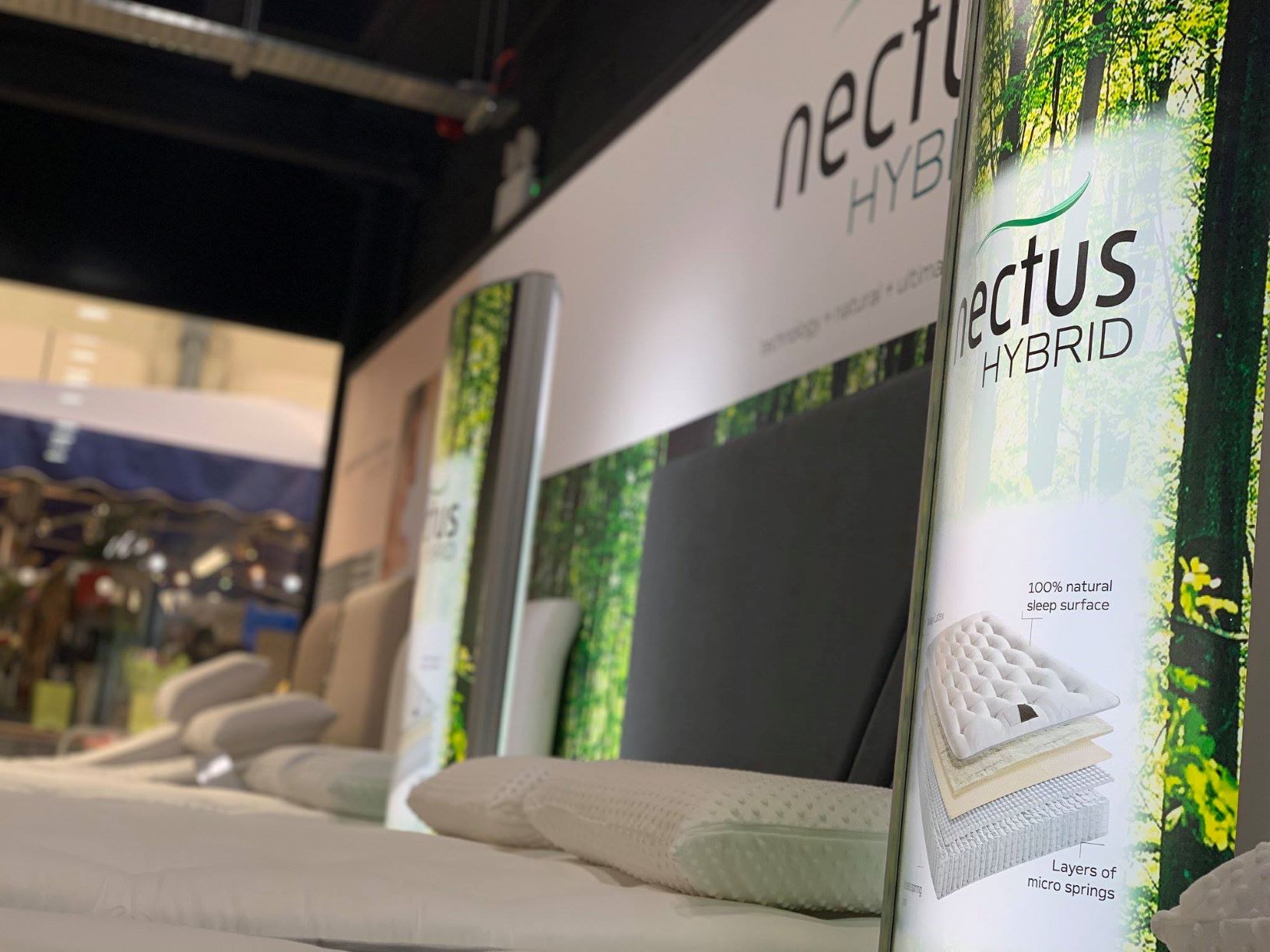 Sussex Beds in the UK uses its HP Latex 800W to print sustainable marketing materials for use across its stores
Sussex Beds in the UK uses its HP Latex 800W to print sustainable marketing materials for use across its stores
The HP Latex 800W is running alongside two existing HP devices – a HP DesignJet Z660 and HP DesignJet Z660 – but where it differs from the other machines is its sustainable features. As is the case with all HP Latex machines, the 800W uses water-based inks, which HP says are much kinder to the environment than their solvent, eco-solvent and UV counterparts.
“HP Latex printers lay ink on the substrate rather than in it, so it makes recycling the substrate much easier,” said Nick Butcher, visual merchandising manager at Sussex Beds. “HP cartridges are made from cardboard and can be recycled, while we have also been recycling our Z ink cartridges through the HP Planet Partner program for a while.
“The great thing with the HP Latex 800W is the white printing aspect. We can print on limited substrates with the Z machines but nowhere near as many as with the Latex. It means that in the future we may be able to move away from traditional posters and into something more interesting, such as adding backlit effects to printed pieces.”
Another advocate of HP Latex is Belgian print business Supercolor, which recently took on a new HP Latex 3600 and HP Latex 800W to enhance its sustainable offering.
While both HP Latex machines allow the company to produce more environmentally friendly work, water-based HP Latex inks also have lower volatile organic content (VOC) count than other ink types, opening up more work in the medical sector.
“We are now able to take on more work in the medical sector, in which printed applications must meet certain health and safety criteria,” Supercolor manager Philippe Staelens said. “This is also true of other interior graphics applications. To build a sustainable print business, we need a supply chain that shares our values and that’s one of the reasons why we chose HP printers.”
Problems with PVC
Technology choice is one matter, but materials are a whole other consideration. In the UK, large-format print business Colour Graphics has spoken about how its use of the SL-F04 Premium Solar Greyback Frontlink banner material from Soyang Europe has allowed it to win more work from sustainably minded customers.
A 100% polyester woven fabric coated with a grey back, Soyang SL-F04 is a PVC-free option for PSPs, offering users a smooth surface and full opacity. This, Soyang Europe said, makes it an effective solution for printed applications such as banners, roll-up banners and home décor.
The material is also fire-resistant fabric, available in widths of up to 5m and is compatible with UV, Latex and eco-solvent printing technologies. Its planet friendly nature is further strengthened with the fact that it is degradable and Oekotex Standard 100 Certificated.
“There is a big stigma around the use of PVC, and we were getting asked a lot for non-PVC materials when producing banners,” Colour Graphics’ sales and marketing manager James Birch said. “By offering this new service, we are plugging a hole in the market created by the stigma of PVC and the need to satisfy environmental requirements.
“For some of our customers, they need to hit certain sustainability targets; our new non-PVC offering helps them to achieve this.”
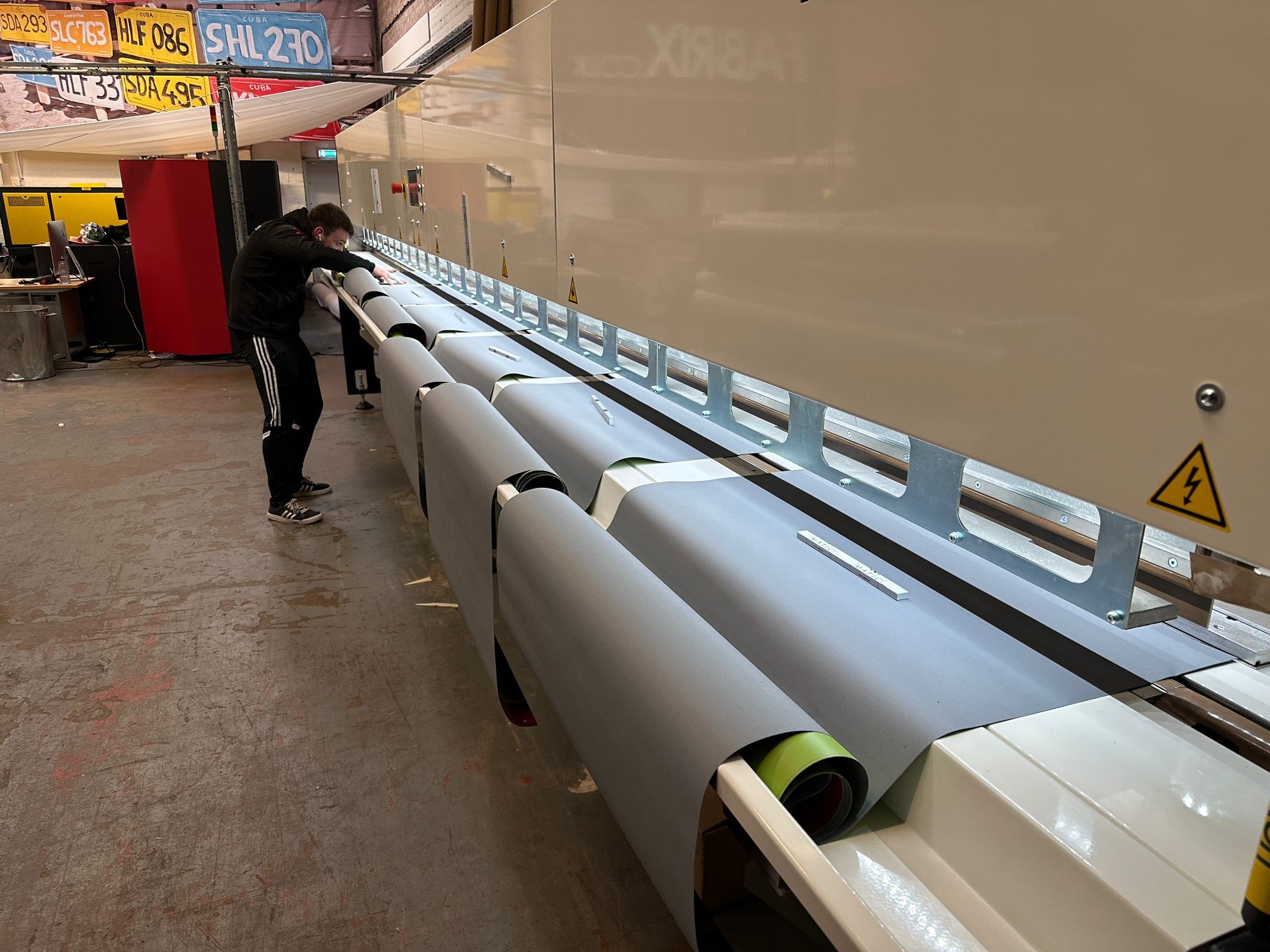 Colour Graphics has been running SL-F04 Premium Solar Greyback Frontlink on its Matic Hera impulse welder
Colour Graphics has been running SL-F04 Premium Solar Greyback Frontlink on its Matic Hera impulse welder
Stay on your feet
Another supplier that has responded to demand for PVC-free solutions in interior print work is Drytac, which has a range of products available. Picking out one offering in particular, Polar PET 170 is a polyester floor and wall graphic, scuff- and tear-resistant film for short-term indoor applications such as POS, decals and retail promotions.
“Polar PET 170 contains up to 40% industrial recycled content; this makes Polar PET 170 an ideal choice for retailers with demanding green initiatives,” Drytac said. “It’s been designed to be non-slip and scuff-resistant without the need for lamination so users can apply them straightaway, speeding up the process for fast-moving projects.”
For an example of this film in action, UK-based custom morphmy used Polar PET 170 film to create a ‘River of Christmas’ floor graphic to help raise awareness for a charity drive at local Indian restaurant Spice Fusion. A colourful, festive-themed design featuring baubles, candy canes, holly and wrapped presents was printed on the film using a Roland VG2-540.
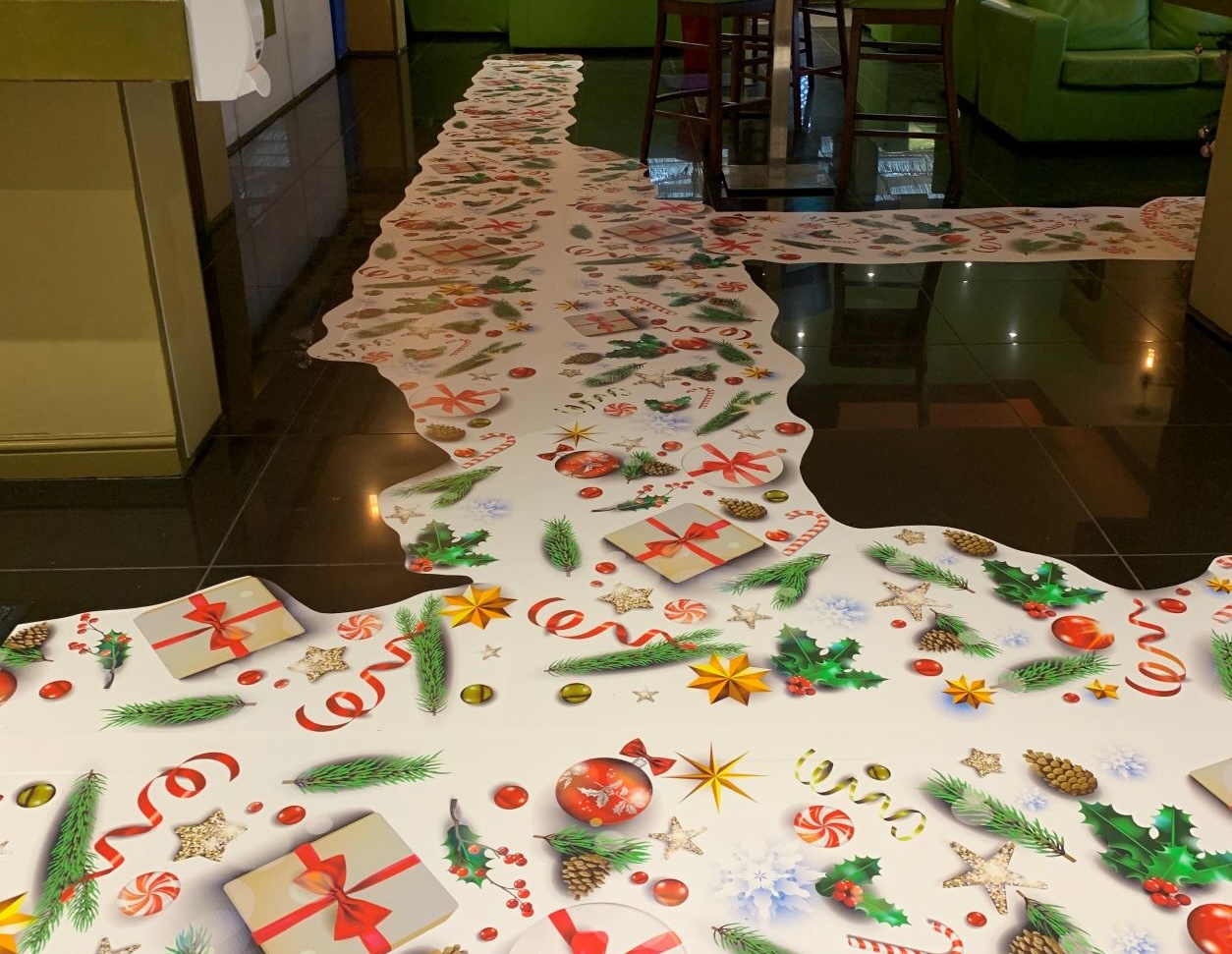 Polar PET 170 from Drytac is a PVC-free polyester floor and wall graphic film
Polar PET 170 from Drytac is a PVC-free polyester floor and wall graphic film
“We only had one day to create a design and print ahead of laying the graphics, so we selected a fairly straight forward scheme,” morphmy owner Rob Oldland said. “I designed it in such a way that I could make a final decision for cut and placement on site to reduce the amount of design time and back and forth with the customer. I found the film to be a great all-rounder for floor or wall projects I have worked on in the past and it was the only suitable media on hand that would meet the requirements for this job.”
Sustainability is an absolute must for print and wide-format print businesses if they are to keep hold of environmentally minded customers and win new work from other clients in the interior décor sector. By working with planet friendly machinery and materials such as those listed here, this will go a long way in ensuring they can deliver high quality work in a sustainable manner.
Discover the latest innovations in interior printing at FESPA Global Print Expo 2024, Europe’s leading print and signage exhibition. Taking place from 19th – 22nd March 2024 at RAI Amsterdam, Netherlands. Register here to visit and use code FESJ402.
Topics
Recent news

Kodak's 2024 Sustainability Report: A Commitment to a Greener Future
Kodak's 2024 Sustainability Report, "One World, One Kodak," demonstrates a strong commitment to environmental and social responsibility. The report highlights impressive reductions in greenhouse gas emissions (56%) and water withdrawal (31%) and aims for zero waste by 2025. Notably, Kodak is pioneering double materiality assessment in the printing industry, aligning sustainability with financial reporting, and showcasing its products' environmental benefits.

How can printers lower costs on energy usage?
Clare Taylor outlines simple steps for businesses to achieve energy sustainability, focusing on cost savings and staff comfort. It emphasises starting with measuring energy consumption to identify key areas for improvement. Subsequent steps involve managing energy use through behavioral changes and low-cost interventions, like optimizing cooling settings and ensuring equipment is switched off when not needed.
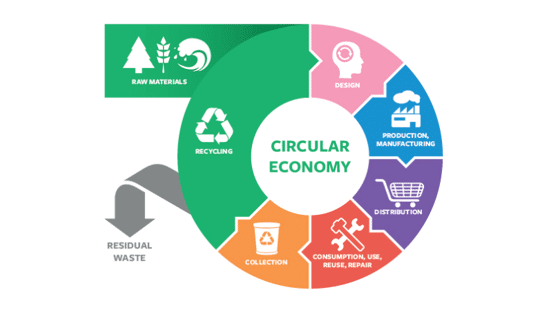
The European Union's circular economy plan
Printing companies must understand the EU's Circular Economy Action Plan (CEAP), part of the European Green Deal. These initiatives drive sustainability, impacting businesses globally, even if not EU-based, through customer requirements. Printers need to be aware of reporting and sustainability expectations to manage risks and retain clients.

A revised look at sustainability in wide format print
Sustainability is crucial for wide-format print, moving beyond marketing to an imperative driven by brands and regulations. Common "eco" claims often mask complexities; true sustainability demands carbon reduction as a core principle. Life Cycle Assessment (LCA) offers data-driven insights for genuine environmental improvement, as demonstrated by UFABRIK's transparent approach.